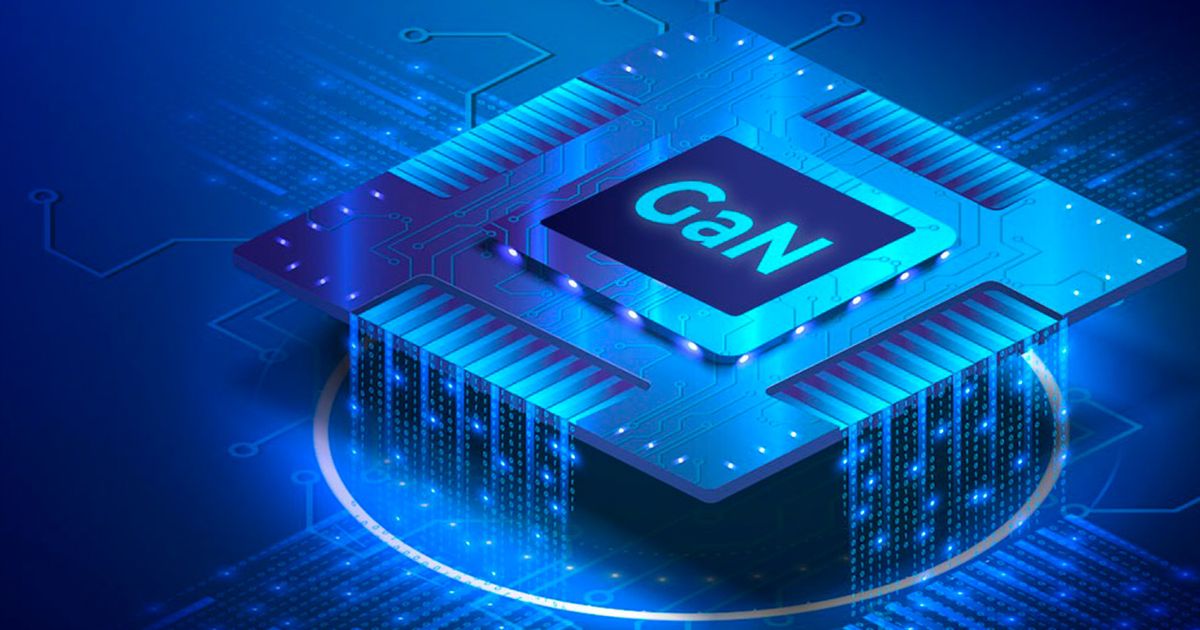Introduction
In our rapidly advancing technological age, the demand for more efficient and powerful electronic devices is insatiable. From smartphones to electric vehicles, we all crave longer battery life, faster charging, and devices that can keep up with our modern lifestyles. This is where GaN (Gallium Nitride) technology steps in as a game-changer.
Imagine a world where your smartphone charges in a fraction of the time it currently takes, or where your electric vehicle can travel further on a single charge. GaN technology is the driving force behind these advancements, promising to revolutionize the way we power and interact with our everyday devices.
In this article, we’ll delve into the fascinating world of GaN technology, exploring its potential to transform not only our gadgets but also our overall energy efficiency and consumption. Let’s embark on this journey into the future of power electronics.
Follow us on Linkedin for everything around Semiconductors & AI
What is Gallium Nitride technology?
GaN, or Gallium Nitride, is a semiconductor material revolutionizing electronics. Its key advantage over traditional silicon lies in its ability to handle higher voltages and switch at much faster speeds. This means GaN-based devices can deliver more power efficiently. In daily life, GaN technology is making a significant impact.
For instance, GaN chargers can power up smartphones in half the time compared to conventional chargers. GaN transistors in power supplies for laptops and electric vehicles result in longer battery life and faster charging. Overall, GaN technology is enhancing the performance and efficiency of our everyday electronic devices.
Read more: 5 Reasons Why Is It So Hard to Manufacture Semiconductors?
Evolution to silicon to Gallium Nitride
Gallium Nitride (GaN) and silicon are two different materials used in electronics. GaN’s evolution over silicon represents a technological leap.
In simpler terms, GaN is like a superhero in the electronics world. It can handle more power without getting too hot, making it super-efficient. Imagine your old incandescent light bulb (silicon) and a modern LED bulb (GaN). The LED bulb uses less energy, stays cool, and lasts longer.
A comparison table between Silicon (Si) and Gallium Nitride (GaN) based on various properties and characteristics.
| Property/Characteristic | Silicon (Si) | Gallium Nitride (GaN) |
|---|---|---|
| Material Composition | Elemental (Si) | Compound (GaN) |
| Bandgap (eV) | 1.12 | 3.4 |
| Thermal Conductivity (W/m·K) | 148 | 130–240 |
| Breakdown Electric Field (MV/cm) | 0.3–0.7 | ~3–6 |
| Electron Mobility (cm^2/V·s) | ~1500 | ~2000–2500 |
| Saturation Electron Drift Velocity (cm/s) | ~10^7 | >2 × 10^7 |
| Critical Field (MV/cm) | ~0.3 | ~3–4 |
| Dielectric Constant | 11.7 | 9–10.5 |
| Melting Point (°C) | 1414 | 1700–1800 |
| Crystal Structure | Diamond cubic | Wurtzite |
| Cost | Lower cost | Higher cost |
| Applications | Integrated circuits, solar cells | Power electronics, LEDs, RF devices |
| Efficiency and Power Handling | Limited power handling, lower efficiency at high frequencies | High power handling, higher efficiency at high frequencies |
| Switching Speed | Slower switching speed | Faster switching speed |
| Voltage Rating | Lower voltage rating | Higher voltage rating |
These properties play a significant role in determining the suitability of these materials for various applications, especially in the fields of electronics and power devices.
Applications of Gallium Nitride
| Application | Description | Key Properties Utilized |
|---|---|---|
| Power Electronics | High-power, high-frequency applications (e.g., inverters, power supplies, motor drives) due to GaN’s high electron mobility and breakdown voltage. | High electron mobility, high breakdown voltage, high power density, efficient at high frequencies. |
| RF (Radio Frequency) Devices | Efficient and high-frequency RF amplifiers, base stations, radar systems, and wireless communication systems. GaN offers improved efficiency and power handling at microwave and millimeter-wave frequencies. | High electron mobility, high-frequency operation, high power handling, and efficiency. |
| LEDs (Light Emitting Diodes) | Efficient, high-brightness LEDs used in lighting applications, displays, and optoelectronic devices. GaN-based LEDs provide superior performance and energy efficiency. | Direct bandgap, high thermal conductivity, efficient light emission. |
| Power Amplifiers (PA) | GaN-based PAs are used in satellite communication systems, defense electronics, and wireless infrastructure for improved power efficiency and higher frequency operations. | High electron mobility, high-frequency operation, high power density, and efficiency. |
| Automotive Electronics | In automotive applications, GaN is used for power conversion, electric vehicle (EV) charging systems, on-board chargers, and DC-DC converters, benefiting from its high power density and efficiency. | High electron mobility, high breakdown voltage, high power density, and efficiency. |
| Photodetectors | GaN-based photodetectors find applications in imaging, remote sensing, and optoelectronic devices due to their high sensitivity in the UV and visible light spectrum. | High electron mobility, direct bandgap, high thermal conductivity, and high sensitivity to UV and visible light. |
| Consumer Electronics | GaN is used in various consumer electronic devices like laptops, smartphones, tablets, and chargers to enhance efficiency, reduce size, and improve charging speed. | High electron mobility, high breakdown voltage, and efficiency. |
| Solar Power Inverters | GaN-based power electronics are used in solar inverters to enhance energy conversion efficiency and reduce losses. | High electron mobility, high breakdown voltage, high power density, and efficiency. |
The Ubiquitous Utility of Gallium Nitride Technology
Gallium Nitride (GaN) technology has become indispensable in various applications, offering superior performance compared to traditional silicon-based components. Its unique properties make it a compelling choice for specific scenarios.
Power Efficiency and Miniaturization
GaN’s high electron mobility allows for more efficient power conversion. This is crucial in compact devices like laptop chargers, where size matters. GaN enables smaller, lighter, and faster chargers while maintaining high energy efficiency.
Example: Smartphone Chargers
Modern fast chargers for smartphones often utilize GaN technology. They’re smaller and lighter than their silicon counterparts, yet deliver rapid charging speeds, improving convenience for users.
High-Frequency Applications
GaN’s ability to handle high frequencies makes it ideal for applications like 5G communication systems and radar technology. It enables faster data transfer rates and more accurate signal processing.
Example: 5G Networks
GaN is a cornerstone of 5G infrastructure, allowing for higher data speeds and improved connectivity. This technology is vital for the future of wireless communication.
Extreme Environments and Aerospace Applications
GaN’s resilience in harsh environments, such as those encountered in aerospace and defense, makes it invaluable. It’s used in radar systems, electronic warfare, and satellite communication.
Example: Satellite Communication Systems
GaN amplifiers ensure reliable and high-quality communication between satellites and ground stations, even in the demanding conditions of space.
Conclusion:
Moreover, GaN technology’s versatility and superior performance have led to its widespread adoption in critical areas, from consumer electronics to aerospace. Its impact continues to shape our modern world, enabling more efficient and reliable systems.ms.
Future of GaN Technology
Gallium Nitride (GaN) is set to transform power electronics, creating smaller, energy-efficient devices. Its high-frequency capabilities will drive faster and more reliable 5G networks. In electric vehicles, renewable energy, and aerospace, GaN will boost efficiency and performance. As GaN tech evolves, expect broad integration, leading to a connected, energy-efficient, tech-advanced future.




